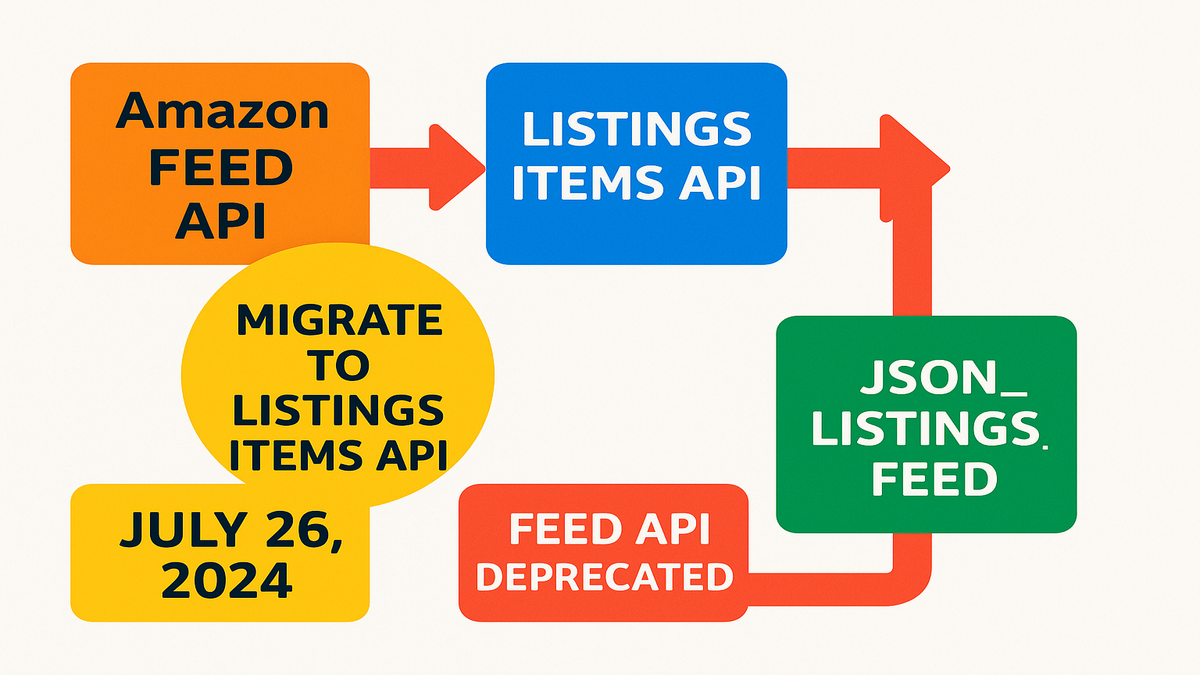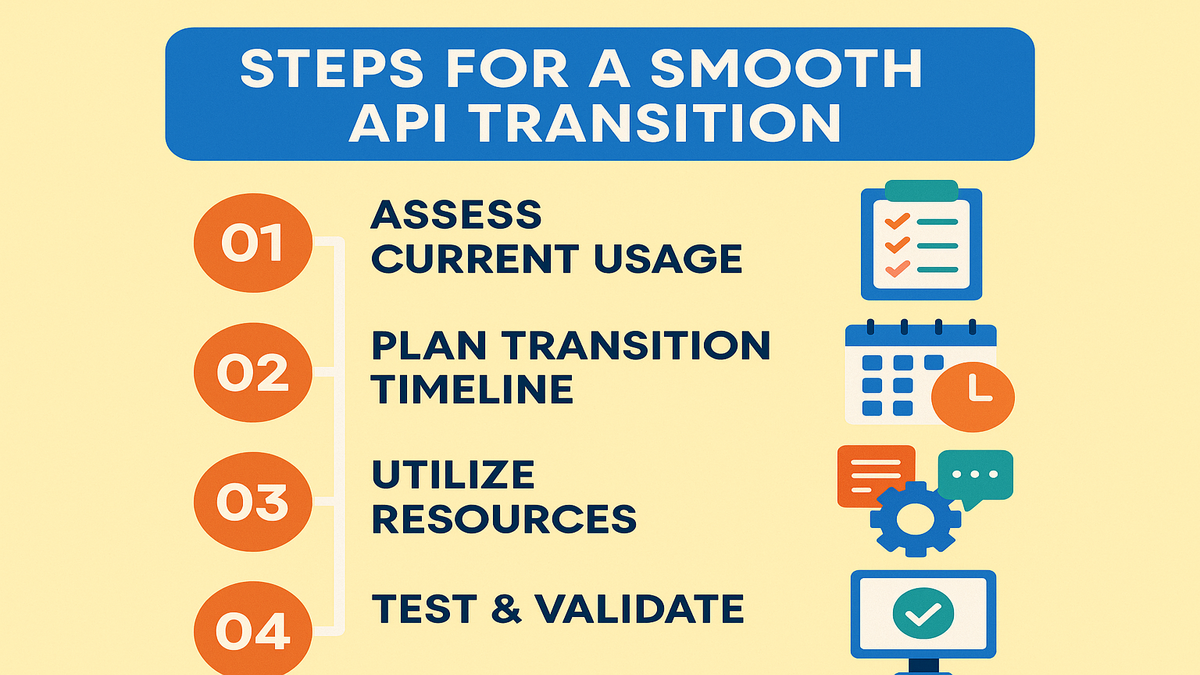
Navigate the Upcoming Feeds API Changes by 2025

Buckle up (or unplug, maybe, because you’re about to hit the floor) because just when you thought the task of figuring out how to negotiate Amazon’s ever-expanding ecosystem couldn’t get any dizzier, along comes a new deadline. Amazon will discontinue at least one feed type by 31 July, 2025. And, if you’re not nimble, that change could upend your entire business.
Let’s hit this head on, and let me try and sew up that seamless customer journey again!
That clock’s ticking, folks, and unless you pay attention, you stand to lose some of your data, break your services and get a hysterical run of panic phone calls to your dev team- if they are your friends. But the great news is answers are at your fingertips AND this can be a quantum leap for your business.
TL;DR
- Feed API To Be Retired on July 31, 2025.
- Be ready to migrate to either the Listings Items API or the JSONLISTINGSFEED to avoid any service interruption.
- Consult the full Software Online Help for full Help documentation of the software that can be printed, including how to use the software.
- The alterations are likely to affect numerous POST feeds that are used for listings and pricing information most frequently.

Feeds API Deprecation
We're killing it!
I guess you already heard about the hype around integration changes by now. Amazon is planning to deprecate a number of feeds such as POSTPRODUCTDATA, so on and so forth by mid-2025. And why should you care? These are Problem Feed types that you bring in when you allow into your system a list, price, availability and other irritating little things that you need to get the items in your Amazon store. After that removal, POST feeds will not work (as and can be thought of as breaking for what you are doing).
Time to act is now! The change to LISTINGS ITEMS API or JSONLISTINGSFEED will be introduced through the Feeds API. This change isn’t just progress — it sets the stage to do almost everything faster, more accurately and, in the meantime, get faster turnaround. Why not modernize your retail outfit in the process?
Risks and Opportunities
Using legacy tools is like using Windows 95 in 2025. Not exactly ideal, is it? And then, the rug gets pulled out from underneath you all of a sudden, all the lifelines are gone, and boom, your competition smokes you. No, unless you’re just jumping on every new API, yes, you’re asking for what is every dev team’s ultimate nightmare, a “service disruption” that nobody wants on something that they work each day to take care of, point by point and data point by data point.
But flip the coin, and what do you have? A shiny opportunity! Powerful APIs translate to better performance, along with new features and smarter use of data. Multiply that by faster throughput of the in-and-out data, and a more seamless integration with Amazon’s other products, and ultimately happier customers who just, can’t get enough.
To find a way to enable them to make the leap while thriving beyond their wildest dreams, all you need to do is check out our case studies and find what the other hustlers turned their powers into.
Navigating the Transition
Dim the lights here: Amazon actually offers a resources library on its site, where I found a bunch of Web pages and guides about this transition. Get started in the Workflow Guide for Listings Items API Failing that, consider the Amazon Migrating Listings Management Workflows Guide And as more than just guides, think of these the same way you’d think about survival packs on a “safari-paced, make it or you’ll die out here” ordeal.
API rockstar Jane Doe has some insider tips: “It may feel like your move is just a drop in the ocean, yet the map you create is definitely going to refresh your business district. Sticking it to the little guy When you really, really grind it out (and provide webinars, and sample solutions available on Amazon), building a skill is, oh, God, it may dare I say it, it’s fun to make.”

Mid-Course Recap
- Key Change From previous POST feeds to Listings Items API/JSON Feeds.
- Deadline: Migrate all workloads on or before July 31, 2025.
- Learning Resources: Amazon has given us good documentation, videos and some sample apps to start with.
Answering Your Questions
But what if I just want POSTs feeds?
Yes, the panic is on. She advised beginning to transition off now, in Amazon’s words, to either to JSONLISTINGSFEED or Listings Items API to keep the water clear.I would love to takeover the code base, but I can't afford a developer. Is there a way that I can do this migration?
One tech person on your side (preferably me) would be awesome, but both the in-depth guide and example videos are designed to guide you even if you barely know your way around a computer. You're not alone in this!Is this new API that much better?
Absolutely. ListingsItems API & JSONLISTINGSFEED Better handling of listing and feed level data here than we used to have.How quickly would integration occur?
That’s more a function of the state of what you have. Oh my you should, time us in for learning new workflows. Remember — take it slow!
What You Need to Do
- Learn the Basics: You know everything about ListingsItems API and JSONLISTINGSFEED.
- Read The Guides: The guides are your bibles—snuggle in with them as they are your new best friends.
- Build a Test Environment: Mistakes on openness can be very expensive — a test environment is a place to break things.
- Easy Does It: Cross work degrees upward from one day-type of feed to another, not suddenly. That is something really helpful in helping to take away the overwhelm as well.
- Monitor and Tweak: Once you migrate out, keep monitoring those service metrics like a sniper and tweaking them as needed.
Don’t forget it’s all about playing catch-up and planning ahead. Sure, this latest evolution is a digital pain in the neck, but if you read it correctly, it’s actually a chance to streamline your operation. Leverage those guides, those webinars and the vast Amazon library of answers there.
Ready to dive even deeper? Workflows such as the Listings Management Workflows Guide has a recipe for each task, and there are other resources on Amazon that can help you be more efficient in operation.
- 40: Boxes of diapers equals $22 million in lost revenue per day of a tech transition. “Early and late change shall be successive your gain.”
And for those who are ready to step things up a bit and scale their learning and adaptation, check our Features page to learn how to bring your business forward!

